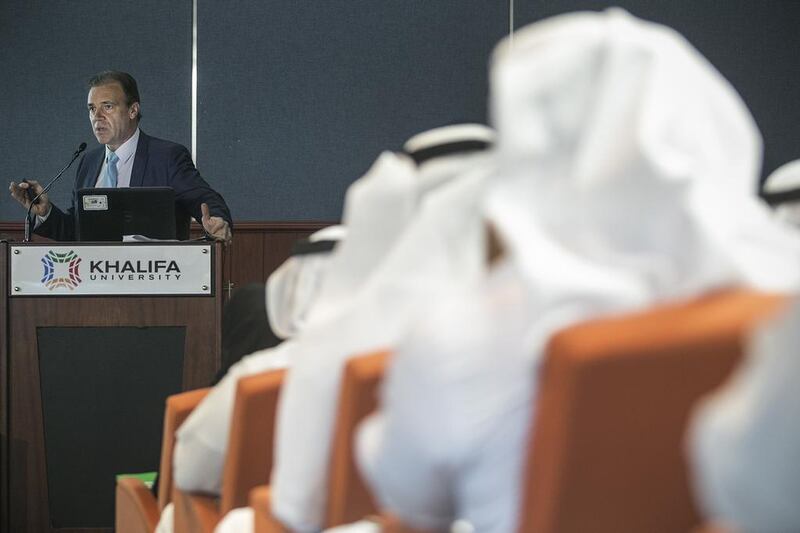ABU DHABI // Staff at the Barakah nuclear power plant are being trained and the building upgraded to deal with earthquakes, floods or any other type of disaster.
The reactor is being fitted with doors and gates to stop water entering, the main control room strengthened against seismic activity, battery life extended in case of power cuts and fire protection measures are being improved.
Officials from the Federal Authority for Nuclear Regulation, or Fanr, and the Emirates Nuclear Energy Corporation this week reviewed the upgrades in light of the International Atomic Energy Agency’s report on the 2011 Fukushima nuclear accident.
“Within a few months after the accident, we asked Enec to submit a safety assessment report describing the response of the Barakah facility to a severe external event and to describe what design improvements would be reasonable and practical,” said Ian Grant, Fanr’s deputy director general for operations.
“By the end of 2011 we had a report of hundreds of pages detailing the safety assessment.
“It addressed the adequacy of the design in extreme events like earthquakes and tsunamis, the loss of internal safety functions, heat removal and core cooling.”
Enec called for 17 design and safety upgrades, all of which were approved by Fanr.
“They’re in various stages of construction as the plant is being completed. They’re being implemented in the construction,” Mr Grant said on Tuesday. “We would expect them to be completed before the plant goes into operation next year.”
A priority is to strengthen and secure the plant’s emergency electrical supplies.
“It’s very important that power comes in too, to be able to run machinery like pumps and valves to maintain the safety functions,” Mr Grant said.
“Increasing the fuel supplies for the emergency generator, making batteries bigger so they can last longer in the event of a complete loss of power, and installing additional diesel generators to supply power to the plant in the event of a shutdown are other upgrades.”
So far, Enec has managed to reduce the risk of damage to the plant’s core by 67 per cent with the new features.
“Our generators are higher than sea level. They reach six metres so water won’t enter the plant,” said Mohammed Sabaan, Enec head of risk assessment.
“After Fukushima, people’s views of nuclear power plants, and how they react and think about operation and management changed around the world,” Mr Sabaan said.
“We are going through an accident management programme to ensure the safety of the community and the environment. We doubled the plant’s battery size and improved its seismic factors.”
Enec staff are also being sent to Korea, the US and the IAEA in Vienna to learn from experts.
Fanr also plans to update its regulations and bring in a more rigorous safety review process.
“A nuclear accident can never be acceptable,” said Christer Viktorsson, director general of Fanr.
“We have to make every effort to ensure we can prevent that from happening because nuclear power should serve us in a good way to produce environmentally friendly electricity.”
The IAEA report presented more than 100 lessons learnt from Fukushima, when a tsunami flooded more than 500 square kilometres, killed 15,000 people and injured another 6,000.
They included a lack of regulatory competency and inspections as two of the main contributors.
“The effectiveness of the regulator was poor and the inspection programme was very weak,” said Gustavo Caruso, the agency’s director of safety and security coordination. “We found that 11 years before the accident, there was a break in the pipe inside the plant and it flooded part of the generators, which are in a vulnerable area.
“But there were no compensatory measures taken.”
Mr Viktorsson said: “Although Barakah has a very low seismic history, nuclear safety benefits from a strong safety culture.
“It’s about how we fight complacency and strive to improve continuously.”
By 2020, the UAE’s four nuclear energy units will provide up to a quarter of the country’s electricity and save up to 12 million tonnes of carbon emissions ever year. The project is 62 per cent complete.
cmalek@thenational.ae






